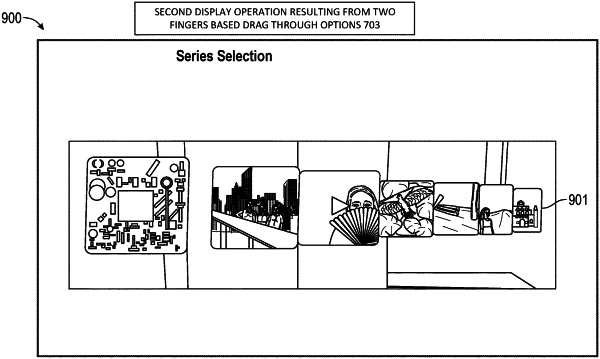| CPC G06F 3/0482 (2013.01) [G06F 3/0488 (2013.01); G06F 3/04847 (2013.01); G06F 2203/04808 (2013.01)] | 18 Claims |

|
1. A method comprising:
concurrently displaying, by one or more processors of an eyewear device, as overlaid on a real-world environment being viewed through lenses of the eyewear device, a plurality of media content control options and a video player that presents a video, one or more of the plurality of media content control options corresponding to adjusting a play position of the video presented by the video player;
detecting, by a touch input interface of the eyewear device, a first touch input comprising a single finger touching the touch input interface, the first touch input being associated with a first media content control option of the plurality of media content control options;
based on detecting the first touch input comprising a press and hold operation, triggering display of a cursor and causing the cursor to track the first touch input to navigate through the plurality of media content control options to the first media content control option;
based on detecting that the single finger has not been released from touching the touch input interface, displaying, by the one or more processors, a second media content control option related to the first media content control option;
performing a first display operation comprising a selection associated with the second media content control option based on movement of the single finger along the touch input interface;
after the single finger is initially detected by the touch input interface and while the single finger continues to be detected by the touch input interface, determining that an additional finger has been added to touch the touch input interface together with the single finger such that the touch input interface is receiving touch input by two fingers; and
performing a second display operation different from the first display operation in response to determining that the additional finger has been added to touch the touch input interface together with the single finger after detecting the first touch input comprising the single finger.
|